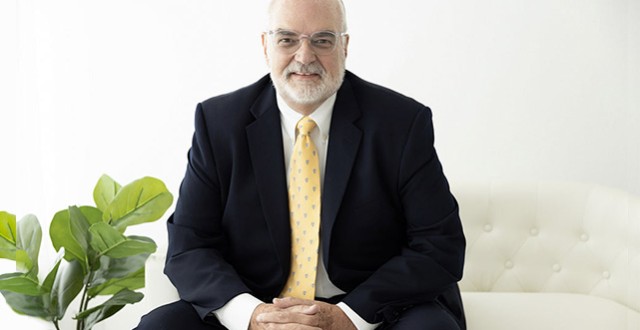
- Mediation
- Arbitration
- Court Neutrals
- Online Dispute Resolution
- Technology
- Court Decisions
- More
- Legislation
- Healthcare
- Guest Posts
- John DeGroote
- John C. Fleming
- Rick Freeman
- Professor Peter Friedman
- Honorable W. Royal Furgeson, Jr.
- James M. Gaitis
- Laura A. Kaster
- Professor John Lande
- Philip J. Loree, Jr.
- Michael McIlwrath
- F. Peter Phillips
- Professor Alan Scott Rau
- Professor Thomas J. Stipanowich
- Professor S.I. Strong
- Richard Webb
- Glen M. Wilkerson
- International arbitration
- Regulation
- Sports and Entertainment
- We’re Back!!!!Well, it’s been a while since we published and that is about to change. Since I spent much of last year becoming
 JAMS Welcomes Karl Bayer to its Panel of NeutralsJAMS, the world’s largest private alternative dispute resolution (ADR) provider, is pleased to announce that Karl Bayer
JAMS Welcomes Karl Bayer to its Panel of NeutralsJAMS, the world’s largest private alternative dispute resolution (ADR) provider, is pleased to announce that Karl Bayer Class Action Waivers in Arbitration Agreements: The Twenty-First Century Arbitration Battleground and Implications for the EU CountriesLinda S. Mullenix, Morris & Rita Atlas Chair in Advocacy at the University of Texas School of Law, has written “Class Ac
Class Action Waivers in Arbitration Agreements: The Twenty-First Century Arbitration Battleground and Implications for the EU CountriesLinda S. Mullenix, Morris & Rita Atlas Chair in Advocacy at the University of Texas School of Law, has written “Class Ac Picking the Proper Technological Tool for Problem-Solving in ArbitrationProfessor Amy J. Schmitz, John Deaver Drinko-Baker & Hostetler Chair in Law and Co-Director of the Translational Data An
Picking the Proper Technological Tool for Problem-Solving in ArbitrationProfessor Amy J. Schmitz, John Deaver Drinko-Baker & Hostetler Chair in Law and Co-Director of the Translational Data An
Recent Posts
Corpus Christi COA Holds Arbitrator Must Decide Whether Arbitral Clause Was Illusory
The Court of Appeals of Texas in Corpus Christi has ruled that a wrongful death lawsuit should be submitted to arbitration.
Continue reading...Arbitration of Internal Trust Disputes: The Next Frontier for International Commercial Arbitration?
S.I. Strong, Manley O. Hudson Professor of Law at the University of Missouri School of Law, Senior Fellow at the Center for the Study of Dispute Resolution, and Adjunct Professor at Georgetown University Law Center, has published “Arbitration of Internal Trust Disputes: The Next Frontier for International Commercial Arbitration?,” To be published in final form in ICCA Congress Series No. 20, “Evolution and Adaptation: The Future of International Arbitration” (Wolters Kluwer, 2019 Forthcoming); University of Missouri School of Law Legal Studies Research Paper No. 2018-14.
Continue reading...SCOTUS Agrees to Consider Arbitrability of Independent Contractor Agreements
The United States Supreme Court has granted certiorari in a case involving the arbitrability of independent contractor agreements.
Continue reading...Fifth Circuit Affirms Order Denying Arbitration Where Judicial Process Was Invoked
The Fifth Circuit Court of Appeals has ruled in an unpublished opinion that a physician waived his right to arbitration by substantially invoking “the judicial process to the detriment or prejudice of the other party.”
Continue reading...Arbitration
The United States Court of Appeals for the First Circuit has ruled that an arbitration clause contained in a ride-sharing app company’s online contract is unenforceable under Massachusetts law.
Continue reading...Mediation
The Texarkana Court of Appeals has upheld a mediation settlement agreement (“MSA”) in a divorce proceeding where the mediator was called upon to resolve a factual dispute concerning the scope of the mediation. In In re Allen, No. 06-10-00085-CV (Tex. App. – Texarkana, March 30, 2011), Daphne and James Allen entered into a mediation settlement agreement during divorce proceedings which resulted in the division of a large piece of property that included the marital residence. Attached to the MSA was “Exhibit B,” a map of the property that was color coded to show exactly which property interests would go to each party and the path of an access easement. The MSA stated the parties agreed it was “binding on the parties,” “and not subject to revocation, repudiation or withdrawal of consent.” The MSA also appointed a mediator who would act “as sole arbiter of any disagreement with regard to the drafting and intent” of the final MSA. After final execution of the MSA, a dispute arose which involved a portion of fifty-nine acres not specifically designated by Exhibit B as the property of either party. The mediator resolved the dispute by awarding a portion of the unassigned property to each party based on the language in the agreement which stated she would have sole authority to resolve any disagreement regarding the final MSA. James Allen challenged the resulting division. During a hearing, the trial court took testimony regarding the dispute and determined that “the parties agreements included arbitration by [the mediator] to be binding, therefore, pursuant to Texas Family Code Section 6.601(b) the court will enter an order reflecting the arbiter’s award.” James Allen appealed. The Texarkana Court of Appeals first held that although binding arbitration was not ordered in the case, the parties agreed to be bound by the MSA. According to the court, under the Texas Family Code Daphne Allen was entitled to a judgment based on the mediator’s resolution of the disputed property and the scope of the MSA was the only remaining issue. Both parties agreed the fifty-nine unassigned acres at issue were discussed at the mediation but the final MSA and Exhibit B failed to clearly indicate any agreement as to those acres. While James Allen testified that he expressed concerns regarding the division of the property to his attorney because the color coding was not visible on a faxed copy of Exhibit B he received during the mediation, and he even marked his claim on an additional map, he signed the final MSA which included Exhibit B. According to the Court of Appeals, this bound him to the agreement and to the resolution of any disputes by the mediator. The court further held the mediator’s resolution of the dispute was properly within the MSA because the fifty-nine acres were discussed at the mediation, and it was the mediator’s understanding that the parties wished to divide all of the property, including the fifty-nine acres, and the parties intended to follow certain boundary lines when they divided the property. Because the mediator was called upon to resolve a factual dispute concerning the scope of the mediation and no arbitration occurred, the Texarkana Court of Appeals affirmed the trial court’s judgment which enforced the MSA and the mediator’s related division of the unassigned property. Technorati Tags: ADR, law, Mediation
Continue reading...Healthcare Disputes
Texas Doctor Proposes Physician-Led Solution to Cut Health Care Costs
By Holly Hayes The New York Times posted last week an interview with Dr. Howard Brody (pictured left), professor of family medicine and director of the Institute for the Medical Humanities at the University of Texas Medical Branch in Galveston, discussing a proposal for health care reform involving physicians. Physicians, Dr. Brody says, are not “innocent bystanders” to increasing health care costs but have made little effort to limit future medical costs. In an editorial in The New England Journal of Medicine, he writes “If physicians seized the moral high ground, we just might astonish enough other people to change the entire reform debate for the better.” The New York Times spoke with Dr. Brody about his “Top Five” solution: Q. You write that doctors have an ethical responsibility to advocate health care reform. Why? A. Doctors have two responsibilities. First, they have a moral duty as an individual advocate. A doctor has a responsibility to his or her individual patients to make them healthier and to help them live longer. But doctors have a second moral duty: they have an obligation to the general public to be prudent stewards of scarce resources. Doctors only get about 10 percent of health care costs in their pockets, but they control about 80 percent. That isn’t our money — it’s someone else’s — and the public has entrusted us to spend it as wisely as possible. Q. How does your “Top Five” solution work? A. The basic idea is that each specialty would decide on the top five procedures or diagnostic studies that are done commonly but only really help a small fraction of patients. These are things like arthroscopy for osteoarthritis of the knee or MRI’s and CAT scans, all of which are massively overused, not because they help but because of our enthusiasm regarding high technology. Once each specialty has gone through the research evidence and decided on its “Top Five,” the respective professional organizations would take a public stand, issuing guidelines and recommendations against overuse of those “Top Five” procedures or studies. By taking a public stand and making it harder for individual doctors to say, “Oh, I know better,” we could build real momentum for cost containment. And we would ultimately all benefit because we don’t need all that technology. You can still be as healthy without it. A physician-led effort to determine guidelines and recommendations against overuse of the “Top Five” procedures or studies could have a tremendous impact on curtailing future medical costs. We suggest that the process outlined by Dr. Brody could benefit from applying conflict resolution techniques. For example, we recently posted a Four-step Approach to Problem-solving used by the program for Health Care Negotiation and Conflict Resolution at Harvard. This approach could be applied to the “Top Five” process: A Four-step Approach to Problem-solving Four negotiation steps developed by the Program for Health Care Negotiation and Conflict Resolution guide minor and major negotiations in health care. The structured multidimensional problem-solving process is called “Walk in the Woods,” after a famous story in which international negotiators at loggerheads over a nuclear arms treaty went for a walk in the woods near Geneva and discovered common interests that led to new solutions. Step one: self interests. Each participant articulates his or her view of key problems, issues, and options. They are encouraged to actively listen, question, and interact with one another. Step two: enlarged interests. The participants reframe their understanding of current problems and possible options with a wider perspective, based on the integrative listening and confidence-building that occurred in step one. Step three: enlightened interests. The group is ready to engage in innovative thinking and problem-solving, generating ideas and perspectives that had not previously been considered. Step four: aligned interests. Participants build common ground perspectives, priorities, action items, agreement, or plans for moving forward. Depending on the scope of the intended objectives, at this point they recognize the tangible contributions and opportunities accomplished through the meeting. We invite your comments on this topic. Technorati Tags: Healthcare, ADR Holly Hayes is a mediator at Karl Bayer, Dispute Resolution Expert where she focuses on mediation of health care disputes. Holly holds a B.A. from Southern Methodist University and a Masters in Health Administration from Duke University. She can be reached at: holly@karlbayer.com.
Continue reading...Applying Conflict Resolution Skills in Health Care PART IV: Invent Options for Mutual Gain
By Holly Hayes Conflict in health care differs from conflict in other arenas because it can result in significant negative outcomes – in some cases, life or death. Part IV in our series on applying conflict resolution skills in the health care setting follows the Principled Negotiation techniques described by Roger Fisher and William Ury in Getting to Yes with a focus on “inventing options for mutual gain”. Part I in the series can be viewed (here), Part II, (here) and Part III (here). Why do we want to take the time to invent options when we disagree? Often conflict appears to have only one solution – split the pie in half — and people usually believe they know the correct answer – their answer is the right answer. Four major obstacles typically inhibit the invention of more than one option for consideration in a negotiation: Premature judgment Searching for a single answer The assumption of a fixed pie Thinking that solving the problem is “the other party’s problem” We can imagine a typical health care conflict between the Emergency Department (ED) Manager and the Manager of Environmental Services (Housekeeping) in a hospital could look like this: Emergency Department (ED) Manager: I am glad you agreed to talk with me about the housekeeping problem we have had in the ED. I think you know that I am short staffed right now and my staff cannot keep up with the minor cleaning after a patient discharge we have been doing up to now. I need your staff to take over all of the cleaning in the department. We have to take care of the sickest, most urgent patients in the hospital. Manager of Environmental Services: Well, I understand you are busy, but my department hasn’t added any new staff, why do you think we could pick up the slack for your staff? ED Manager: Well, let’s just split the jobs then, you do half of the work and we will do our best to do the other half of the cleaning. Manager of Environmental Services: I guess we can try to make that work. The managers did not “expand the pie” before dividing it – they did not invent options for mutual gain before reaching a solution. Let’s look at some other approaches where the managers take the time to invent creative options: Separate the act of developing options from the act of judging the options – brainstorming is a fairly common exercise where parties produce as many ideas as possible without considering their merit until a complete list is made. Broaden the options rather than looking for a single answer – one example of this is to invent options of different strengths, some weaker options, some stronger options for consideration; another example is to look through the eyes of someone else, for example, look at the problem through the eyes of the patient or a family member, what options would they suggest? Search for options that present opportunity for mutual gain – the secret here is to look for joint gain rather than a winner and a loser by identifying shared interests or dovetailing differing interests. Invent ways to make decisions easy for the other party – a painless choice for the other side that advances your interests is a win-win for both parties. Let’s try the conversation with the two department managers applying the techniques above. Emergency Department (ED) Manager: I am glad you agreed to talk with me about the housekeeping problem we have had in the ED. I think you know that I am short staffed right now and my staff cannot keep up with the minor cleaning after a patient discharge we have been doing up to now. We have to take care of the sickest, most urgent patients in the hospital. What do you suggest? Manager of Environmental Services: That is a problem. I wonder if our departments could split the cost of a temporary staff member to help in the short-term? Emergency Department (ED) Manager: That’s a thought. What if we spent some time streamlining the cleaning process to make the best use of the staff’s time. Your department must have a lot of ideas you could share with us. Manager of Environmental Services: We do have some ideas that have worked in other departments that could be applied here as well. Let’s form a group of your staff and my staff to look at how we can work together to solve the problem. By working together, the two managers invented options that will likely result in even more options for consideration that will benefit the departments, the hospital and ultimately the patients. The key is taking time to explore those options for mutual gain that advance the interests of both parties. We welcome your comments and invite you to share other examples of conflict in health care. Technorati Tags: Healthcare, ADR Holly Hayes is a mediator at Karl Bayer, Dispute Resolution Expert where she focuses on mediation of health care disputes. Holly holds a B.A. from Southern Methodist University and a Masters in Health Administration from Duke University. She can be reached at: holly@karlbayer.com.
Continue reading...Legal Research
About Disputing
Disputing is published by Karl Bayer, a dispute resolution expert based in Austin, Texas. Articles published on Disputing aim to provide original insight and commentary around issues related to arbitration, mediation and the alternative dispute resolution industry.
To learn more about Karl and his team, or to schedule a mediation or arbitration with Karl’s live scheduling calendar, visit www.karlbayer.com.













